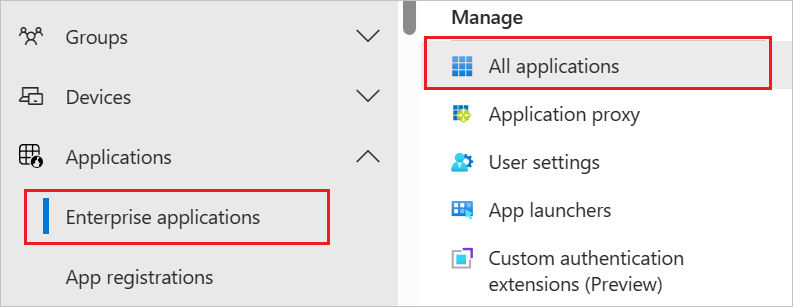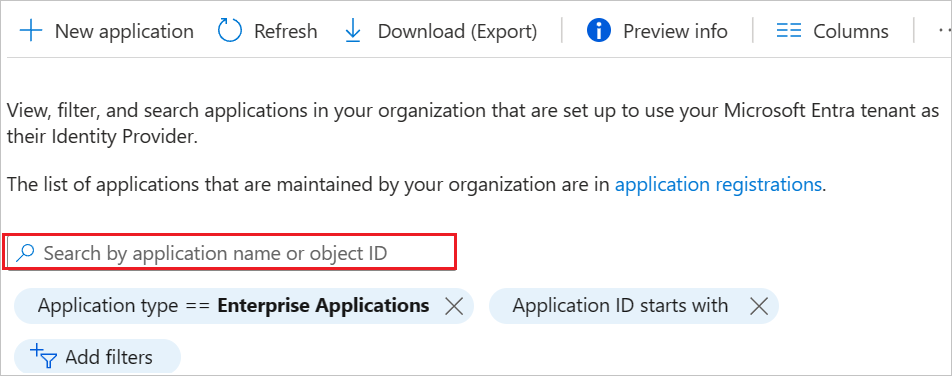Configure Simple In/Out for automatic user provisioning
This tutorial describes the steps you need to perform in both Simple In/Out and Microsoft Entra ID to configure automatic user provisioning. When configured, Microsoft Entra ID automatically provisions and deprovisions users to Simple In/Out using the Microsoft Entra provisioning service. For important details on what this service does, how it works, and frequently asked questions, see Automate user provisioning and deprovisioning to SaaS applications with Microsoft Entra ID.
Supported capabilities
- Create users in Simple In/Out.
- Remove users in Simple In/Out when they do not require access anymore.
- Keep user attributes synchronized between Microsoft Entra ID and Simple In/Out.
- Single sign-on to Simple In/Out (recommended).
Prerequisites
The scenario outlined in this tutorial assumes that you already have the following prerequisites:
- A Microsoft Entra tenant
- One of the following roles: Application Administrator, Cloud Application Administrator, or Application Owner.
- A user account in Simple In/Out with Admin permissions.
Step 1: Plan your provisioning deployment
- Learn about how the provisioning service works.
- Determine who will be in scope for provisioning.
- Determine what data to map between Microsoft Entra ID and Simple In/Out.
Step 2: Configure Simple In/Out to support provisioning with Microsoft Entra ID
Any one of your Simple In/Out administrator-level users can configure Single Sign On.
- In a web browser, head to simpleinout.com and sign in with a Simple In/Out administrator's credentials.
- Click Settings in the upper-right.
- Click Single Sign On under the ENTERPRISE menu on the left.
- If you are not yet on an Enterprise level plan, this settings page will alert you that you need to upgrade your plan in order to use Single Sign On. Follow the link to upgrade your plan if necessary and return to this page.
- Be sure your provider is set to Microsoft and click the Connect Single Sign On button.
- You will be asked to confirm that you wish to enable Single Sign On. Click OK to confirm.
- Click Reveal on your Recovery Key and store this entire key in a safe place. IMPORTANT! If you are ever locked out of your Microsoft accounts and need to disconnect SSO without access, you'll be required to relay the Recovery Key to Simple In/Out technical support.
- Click Reveal on your Bearer Token and make note of it. You'll need this for Step 5.6.
When a new user is provisioned from Microsoft Entra ID to Simple In/Out, Simple In/Out will set that user's role to the default role for your organization. This role will govern the user's permissions inside Simple In/Out. For existing users that may be converted to SSO, Simple In/Out will maintain their existing role.
After users are provisioned to Simple In/Out, any administrator-level user can edit a user's role. This is done by clicking on a user on the Simple In/Out board, then clicking the Edit User button that appears in the user's profile dialog.
You can change the default role in Simple In/Out as well as customize the permissions in the role on Simple In/Out's website.
- Within Simple In/Out's website, click Settings in the upper-right
- Click Roles under the USERS menu on the left.
- Click the Edit button associated with your default role as designated by the green checkmark.
- Any settings can be changed from here and will immediately take effect.
Step 3: Add Simple In/Out from the Microsoft Entra application gallery
Add Simple In/Out from the Microsoft Entra application gallery to start managing provisioning to Simple In/Out. If you have previously setup Simple In/Out for SSO, you can use the same application. However it's recommended that you create a separate app when testing out the integration initially. Learn more about adding an application from the gallery here.
Step 4: Define who will be in scope for provisioning
The Microsoft Entra provisioning service allows you to scope who will be provisioned based on assignment to the application and or based on attributes of the user. If you choose to scope who will be provisioned to your app based on assignment, you can use the following steps to assign users to the application. If you choose to scope who will be provisioned based solely on attributes of the user, you can use a scoping filter as described here.
Start small. Test with a small set of users before rolling out to everyone. When scope for provisioning is set to assigned users, you can control this by assigning one or two users to the app. When scope is set to all users, you can specify an attribute based scoping filter.
If you need more roles, you can update the application manifest to add new roles.
Step 5: Configure automatic user provisioning to Simple In/Out
This section guides you through the steps to configure the Microsoft Entra provisioning service to create, update, and disable users in Simple In/Out based on user assignments in Microsoft Entra ID.
To configure automatic user provisioning for Simple In/Out in Microsoft Entra ID:
Sign in to the Microsoft Entra admin center as at least a Cloud Application Administrator.
Browse to Identity > Applications > Enterprise applications

In the applications list, select Simple In/Out.

Select the Provisioning tab.

Set the Provisioning Mode to Automatic.

Under the Admin Credentials section, input your Simple In/Out Tenant URL and Secret Token. Click Test Connection to ensure Microsoft Entra ID can connect to Simple In/Out. If the connection fails, ensure your Simple In/Out account has Admin permissions and try again.

In the Notification Email field, enter the email address of a person who should receive the provisioning error notifications and select the Send an email notification when a failure occurs check box.

Select Save.
Under the Mappings section, select Synchronize Microsoft Entra users to Simple In/Out.
Review the user attributes that are synchronized from Microsoft Entra ID to Simple In/Out in the Attribute-Mapping section. The attributes selected as Matching properties are used to match the user accounts in Simple In/Out for update operations. If you choose to change the matching target attribute, you need to ensure that the Simple In/Out API supports filtering users based on that attribute. Select the Save button to commit any changes.
Attribute Type Supported for filtering Required by Simple In/Out userName String ✓ ✓ active Boolean displayName String ✓ ✓ title String phoneNumbers[type eq "work"].value String phoneNumbers[type eq "mobile"].value String phoneNumbers[type eq "fax"].value String externalId String ✓ Under the Mappings section, select Synchronize Microsoft Entra groups to Simple In/Out.
Review the group attributes that are synchronized from Microsoft Entra ID to Simple In/Out in the Attribute-Mapping section. The attributes selected as Matching properties are used to match the groups in Simple In/Out for update operations. Select the Save button to commit any changes.
Attribute Type Supported for filtering Required by Simple In/Out displayName String ✓ ✓ members Reference To configure scoping filters, refer to the following instructions provided in the Scoping filter tutorial.
To enable the Microsoft Entra provisioning service for Simple In/Out, change the Provisioning Status to On in the Settings section.

Define the users that you would like to provision to Simple In/Out by choosing the desired values in Scope in the Settings section.

When you're ready to provision, click Save.

This operation starts the initial synchronization cycle of all users defined in Scope in the Settings section. The initial cycle takes longer to perform than subsequent cycles, which occur approximately every 40 minutes as long as the Microsoft Entra provisioning service is running.
Step 6: Monitor your deployment
Once you've configured provisioning, use the following resources to monitor your deployment:
- Use the provisioning logs to determine which users have been provisioned successfully or unsuccessfully
- Check the progress bar to see the status of the provisioning cycle and how close it's to completion
- If the provisioning configuration seems to be in an unhealthy state, the application goes into quarantine. Learn more about quarantine states here.
More resources
- Managing user account provisioning for Enterprise Apps
- What is application access and single sign-on with Microsoft Entra ID?